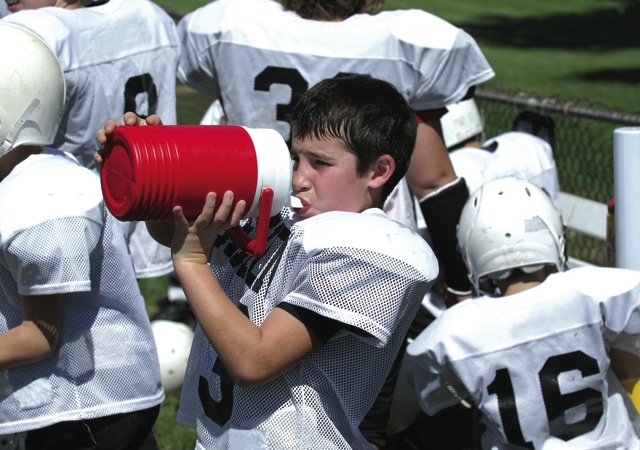More Males Competing On Cheerleading Squads
For the past two seasons, he has participated as the lone boy on the Vikings’ cheerleading squad. He hopes in the future that more boys will try out.
Larson, who was an elite tumbler in his youth, said he considered hard whether or not he should try out for cheer because of possible stigmas.
“I thought people would make fun of me because it is a girl-dominated sport,” said Larson, who plans to cheer for the University of Kentucky, one of the nation’s top programs. “But once I tried out for it, I had so much fun. It started to be a big part of my life. I was like ‘it (the teasing) doesn’t matter.’ ”
There was a time when seeing males participate in cheerleading was more the norm. In fact, cheerleading started as a male sport at the end of the 19th century. The first official cheer was performed in 1884 at Princeton University. Some famous male cheerleaders included former presidents Dwight Eisenhower and Franklin D. Roosevelt. It wasn’t until the men left to fight during World War II that women started to participate in cheer and ultimately dominated the sport.
Estimates show that about 97 percent of modern cheerleading participants are female. At the collegiate level, cheerleading is a co-ed sport with about a 50-50 split between males and females.
At the high school level, the sport ranks in the top 10 in most popular among girls, but participation numbers have increased among boys. According to the National Federation of High School Association, there were 795 schools that participated in competitive spirit squads for boys, with 3,032 participants last season. That’s an increase of 362 schools and 186 boys from the 2010-11 academic year.
Unlike Guilford, Belvidere North, Hononegah and Belvidere have consistently had boys participate in their school’s cheer programs. The IHSA, which now has 48 recognized co-ed cheer teams, increased the number of boys necessary to compete in the co-ed division from one to two this season.
“We have seen spikes and dips in the co-ed entry numbers, as sometimes schools may not have another boy in the program at the varsity level to replace a graduate from year to year,” IHSA assistant executive director Susie Knoblauch said. “However, we do see that schools that traditionally compete in the co-ed division are fairly consistent in being able to remain there and grow the number of boys in their program.”







